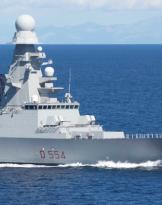Chinese soldiers will travel to Russia to participate in a series of joint exercises. Representations from Belarus, India, Tajikistan and Mongolia will also participate in the maneuvers.
According to a note from the Chinese Ministry of Defense, the exercises will take place in the wake of a bilateral cooperation agreement signed by the states that will take part in the initiative. It is not the first time, moreover, that the Chinese military has participated in military maneuvers organized by the Russians. The last exercises organized by Moscow date back to 2018. On that occasion, China had sent over 3.000 soldiers, more than 900 vehicles and 30 aircraft including fighter-bombers and helicopters. Furthermore, just before the outbreak of the Russian-Ukrainian conflict, Xi Jinping and Vladimir Putin had announced their intention to create a "borderless" collaboration between their respective countries.
The exercises have been called “Vostok 2022”, which means east in Russian, and will take place in Russia's Eastern Military District, which includes part of Siberia and its headquarters in Khabarovsk, near the border with China.
Even if Beijing has denied that the participation of the PLA in the joint exercises is not linked to the current international and regional situation, it is clear that the axis with the Kremlin now appears indissoluble.
Unfortunately, all this is the result of the repeated mistakes made by the West against Moscow. The consequences are having repercussions on financial markets which fear an escalation of the geopolitical crisis not only in Ukraine, where Russia hit two port cities following the explosions in Crimea, but also in Taiwan.
Russia expects the average gas export price to more than double this year, reaching $ 730 per 1.000 m³, before gradually declining by the end of 2025, due to declining exports from its pipelines, according to reports. the Reuters news agency.
Faced with this political and economic emergency, Europe appears incapable of reacting indeed, it seems that it is entering an irreversible crisis precisely because it is open on multiple fronts.
First of all the political aspect: the inability to produce a common diplomatic line to negotiate a ceasefire with Moscow goes hand in hand with the complete flattening of Washington's will. The Americans have every interest in the conflict continuing, even though the enormous contradictions in supporting Zelensky's absurd presidency are emerging from them too.
The economic aspect: Europe needs Russian gas! In the autumn, especially in Italy, the energy crisis will explode, with a steadily rising price inflation that will hit the middle class (or what remains of it). Last month Draghi went to Algiers to negotiate an increase in gas supply from the North African country, equal to an additional 4 billion m³ (in 2021 we imported 21 billion m³ of gas from Algeria).
Last year, Russia supplied us with more than 29 billion cubic meters of gas, equal to 40% of the national needs. In general, the European Union in 2021 was heavily dependent on Russia, with gas imports reaching 45% of the total, or about 140 billion m³ per year.
Then? Do we get the remaining quantity from the Americans, from Qataris, from Egyptians? Liquefied natural gas (LNG) which will cost us twice as much, both in terms of purchases and regasifiers?
In the Italian government's plan for the diversification of gas supply sources, LNG will play a role of increasing importance. In the first half of 2022, LNG made up 17% of imported gas, 20% more than in 2021. From Qatar, which is the main supplier, and from Egypt, an additional 3 billion m³ is expected to arrive in 2022 and another 5 billion in 2023, to which a further 5 billion from the Congo would be added in 2023-2024. In addition, new flows from the United States will arrive, as promised (at great cost) by President Biden to the European Union. However, the LNG needs regasifiers to be introduced into the network, in Italy the regasification plants currently in operation are located in Livorno, Spezia and Rovigo.
In short, this winter let's get ready to turn on the heaters less.
Photo: Russian Federation MoD












